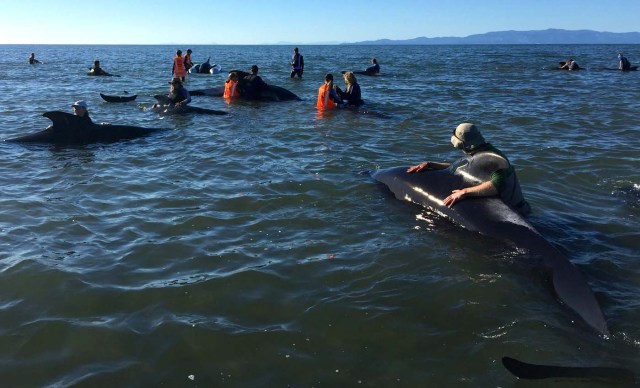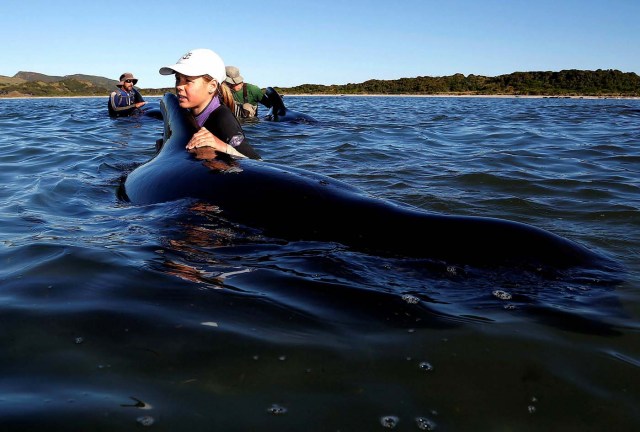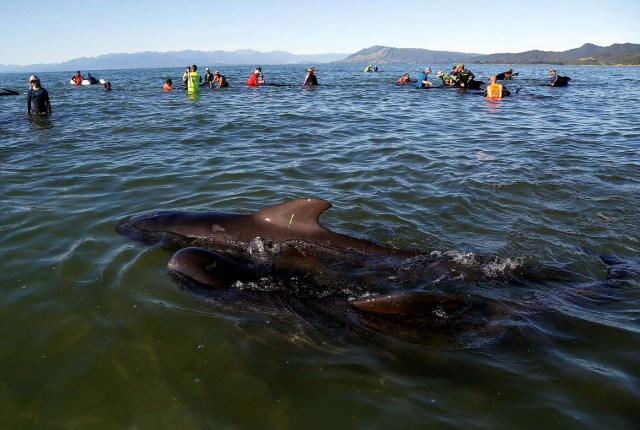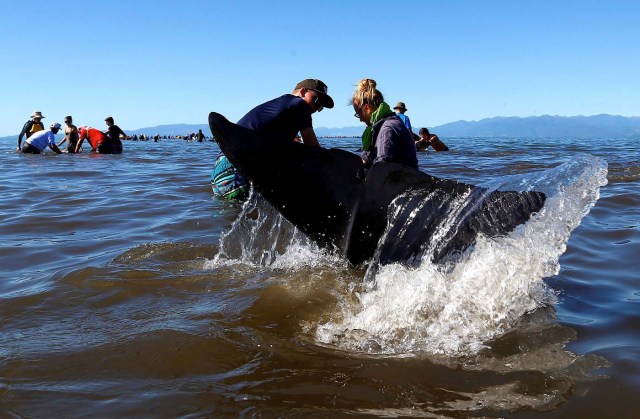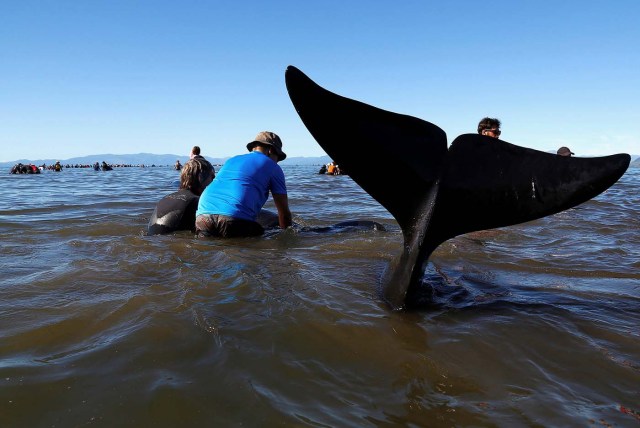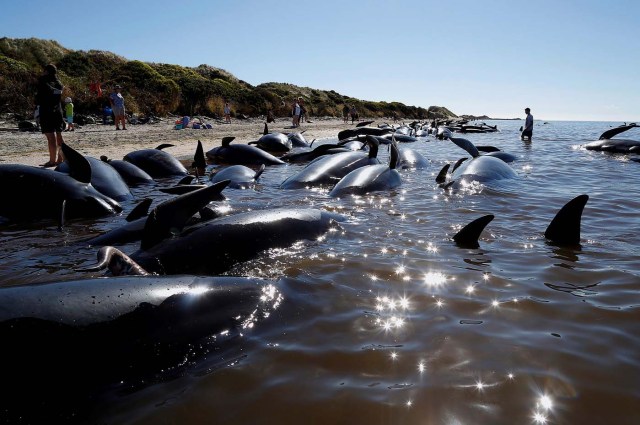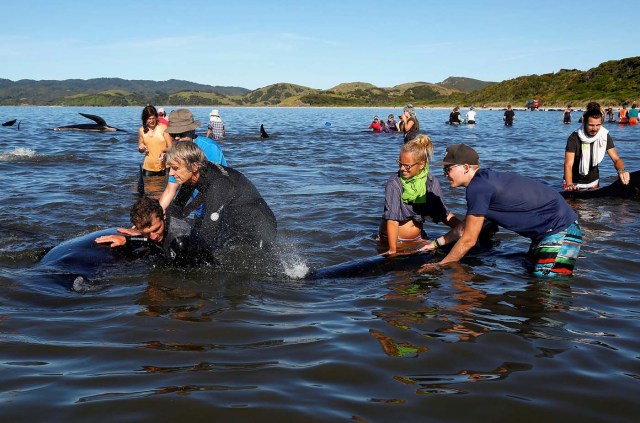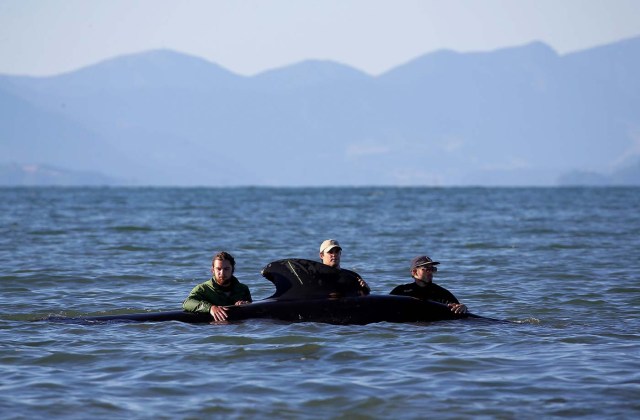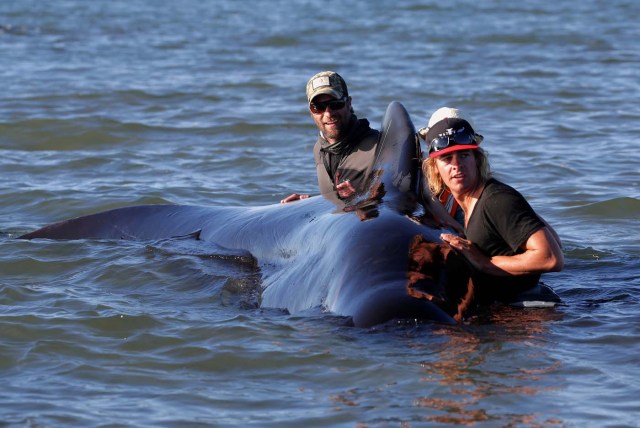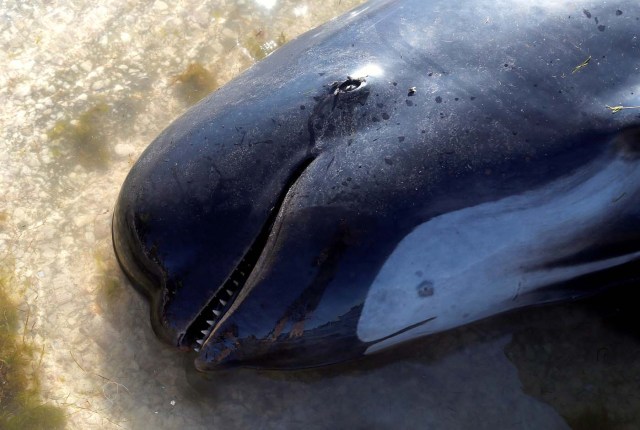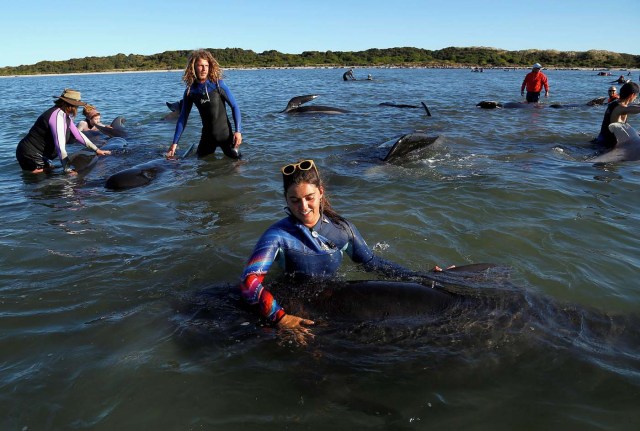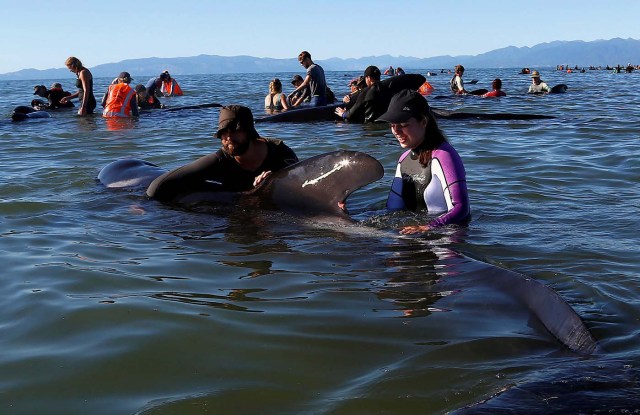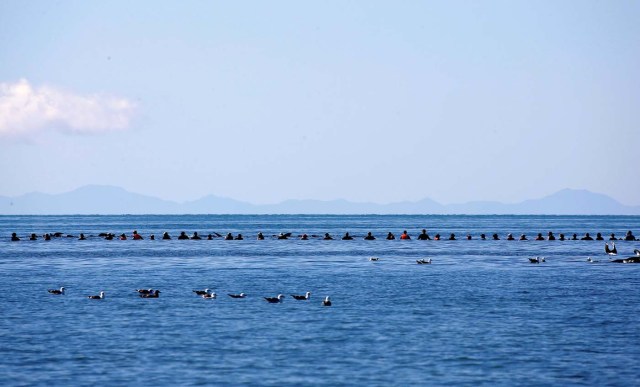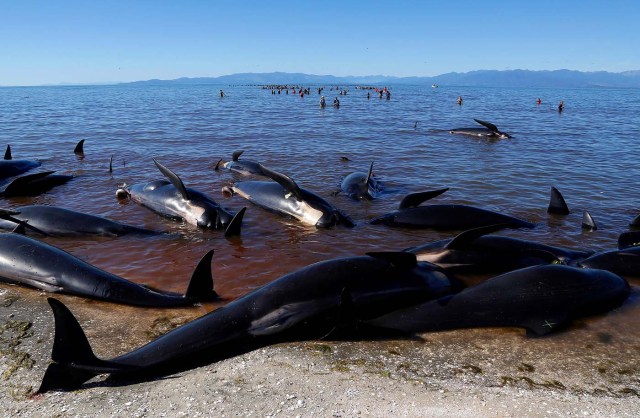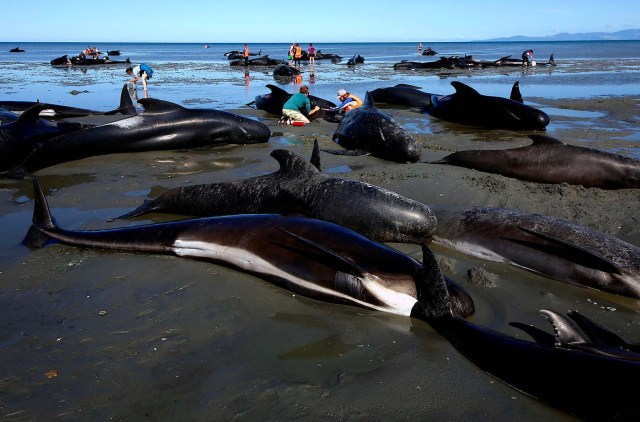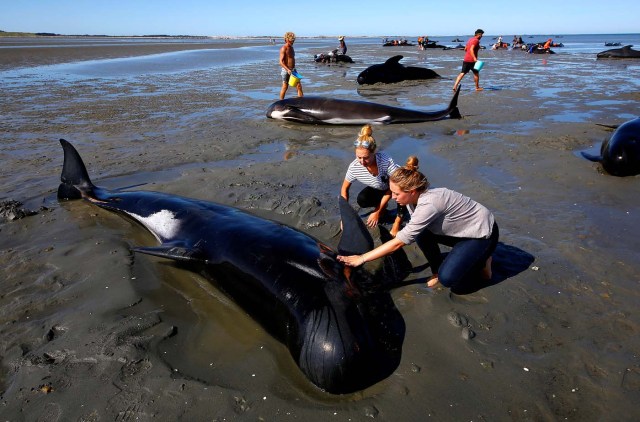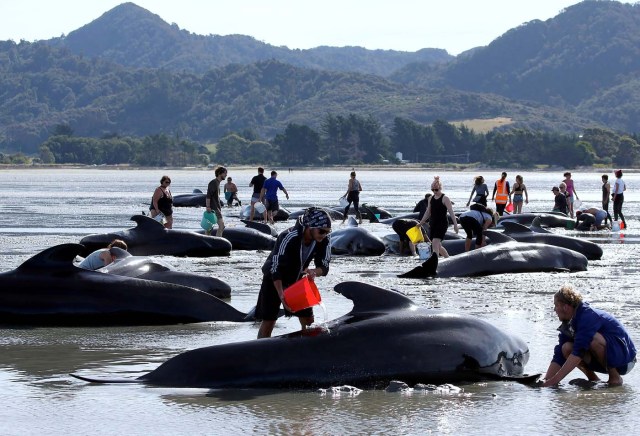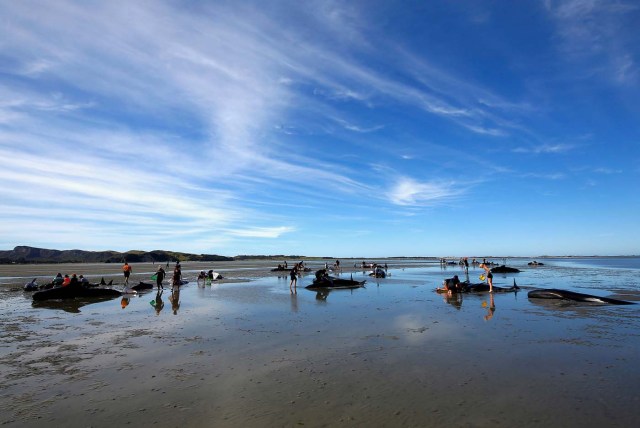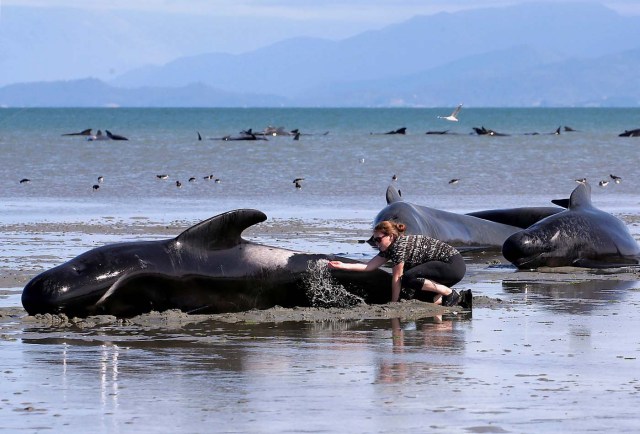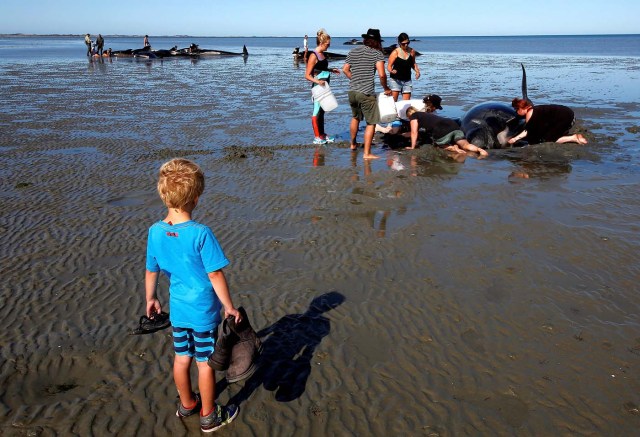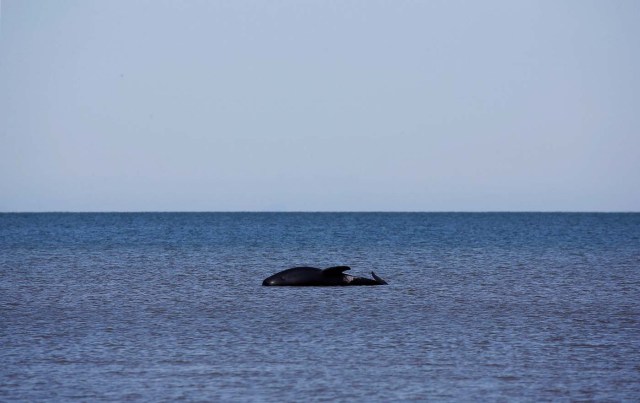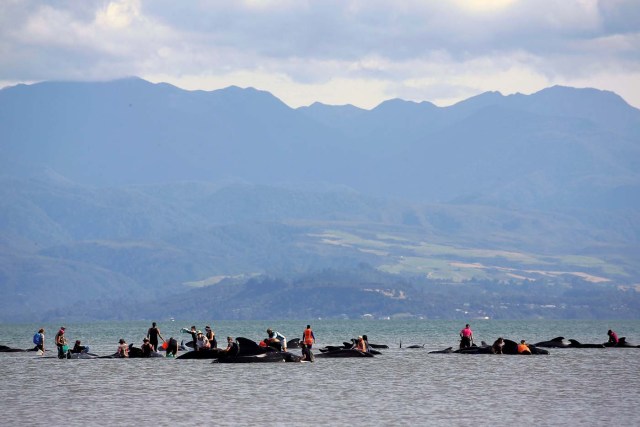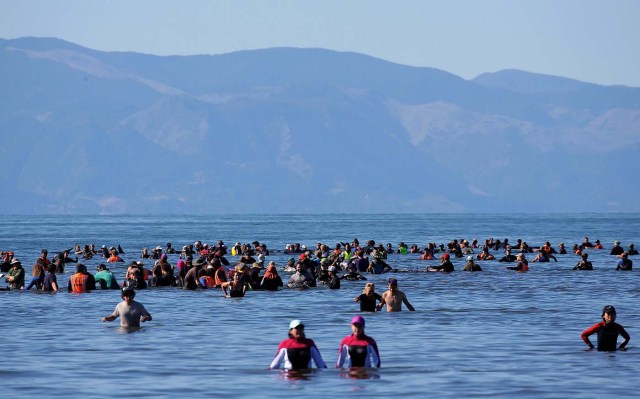
Un grupo de voluntarios desafió este sábado la amenaza de los tiburones para formar una cadena humana en una bahía de Nueva Zelanda y evitar que más ballenas sigan encallando, luego de que varios cientos muriesen la víspera varadas en la playa, reseña AFP.
Los voluntarios también intentaban devolver al mar a unas 100 ballenas consideradas sobrevivientes a la tragedia del viernes, cuando 416 ballenas piloto encallaron en Farewell Spit en la región de Golden Bay, extremidad norte de la Isla Sur, una de las dos principales de Nueva Zelanda.
Las cerca de 150 personas que participaron en la cadena humana hacían lo posible para evitar que vuelvan a quedar atrapadas en la costa.
Las ballenas piloto, también conocidas como calderones, llegan a medir hasta seis metros de largo y son la especie más común en Nueva Zelanda.
Mike Ogle, del departamento de Conservación del medio ambiente, evocó en declaraciones a la Radio Nueva Zelanda la hipótesis de que los cetáceos puedan haber buscado huir hacia la costa asustados por la presencia de tiburones.
Una ballena fue hallada con mordeduras y en la zona de Farewell Spit abundan los tiburones blancos, agregó.
“Uno de los cadáveres tiene mordeduras de tiburón, no muy grandes, más bien chicas, pero son mordeduras recientes o sea que sí, algo está pasando por allá”, dijo.
– Esperando la marea –
El sol complicaba la tarea de los voluntarios en su intento por mantener frescas a las ballenas sobrevivientes a la espera de que horas más tarde la marea vuelva a subir facilitando la operación de devolverlas al mar.
“Hoy el sol radiante nos está volviendo las cosas un poco más problemáticas, porque el calor no es bueno para las ballenas. Ayer tuvimos la suerte de que estaba nublado”, dijo a Faixfax Media Andrew Lamason, del departamento de Conservación ambiental.
Algunos voluntarios intentaban refrescar a las más expuestas, unos esparciéndoles agua sobre el cuerpo, otros excavando la arena para reducir la exposición al sol.
Una vez reflotadas las ballenas, será necesario esperar varias horas para saber si la misión resultó exitosa.
La zona, situada a unos 150 kilómetros al oeste del balneario Nelson, es conocida por la frecuencia con la que encallan ballenas, por la forma del relieve submarino que termina resultando como un trampero gigante para los cetáceos.
“Si alguien se propusiese diseñar un lugar para atrapar ballenas, Golden Bay sería probablemente el diseño ideal”, comentó Lamason. “Frente a Farewell Spit existe una gran cantidad de arena en forma de gancho y las aguas son poco profundas: una vez que las ballenas entraron, es difícil que puedan volver a salir”.
El viernes, cuando se descubrieron las primeras 416 ballenas varadas, unas 300 ya estaban muertas.
En la última década se registraron nueve episodios masivos, siendo el de esta semana el más importante en número de ballenas muertas.
Fenómenos notables anteriores se registraron en 1918, cuando unos mil ejemplares encallaron en las islas Chatham, y en 1985, cuando 450 ballenas murieron en condiciones similares en Auckland.
AFP
Fotos Reuters
